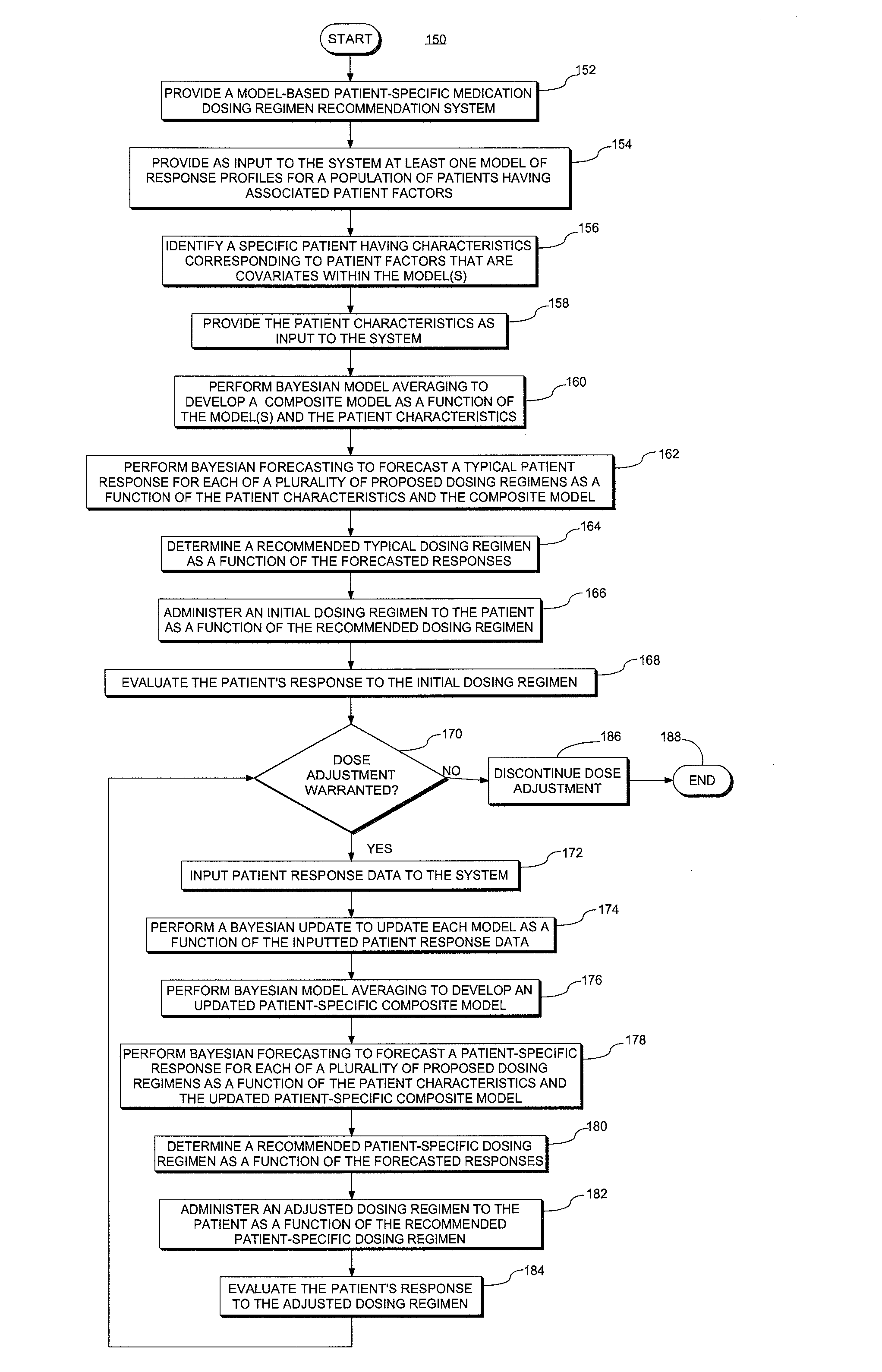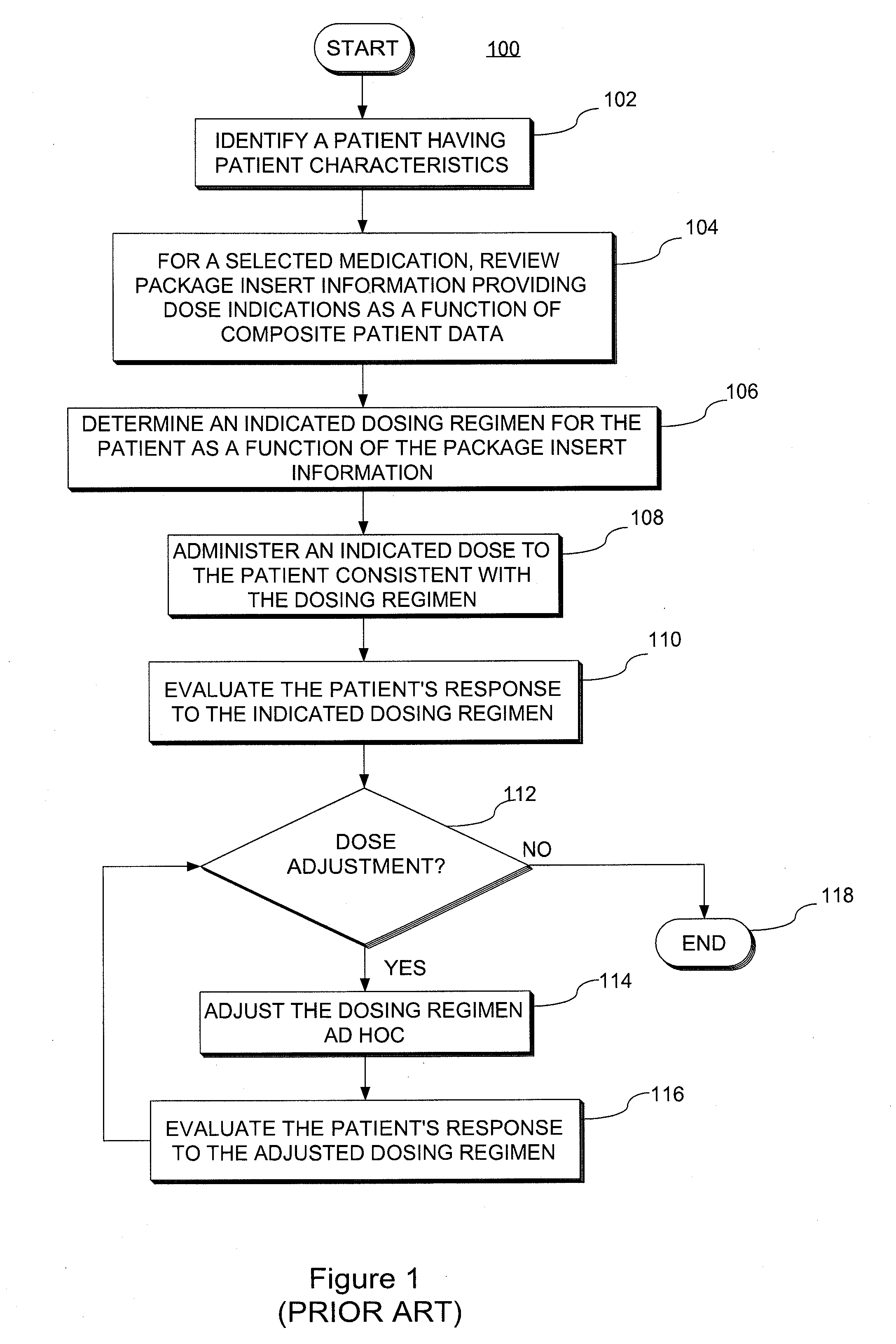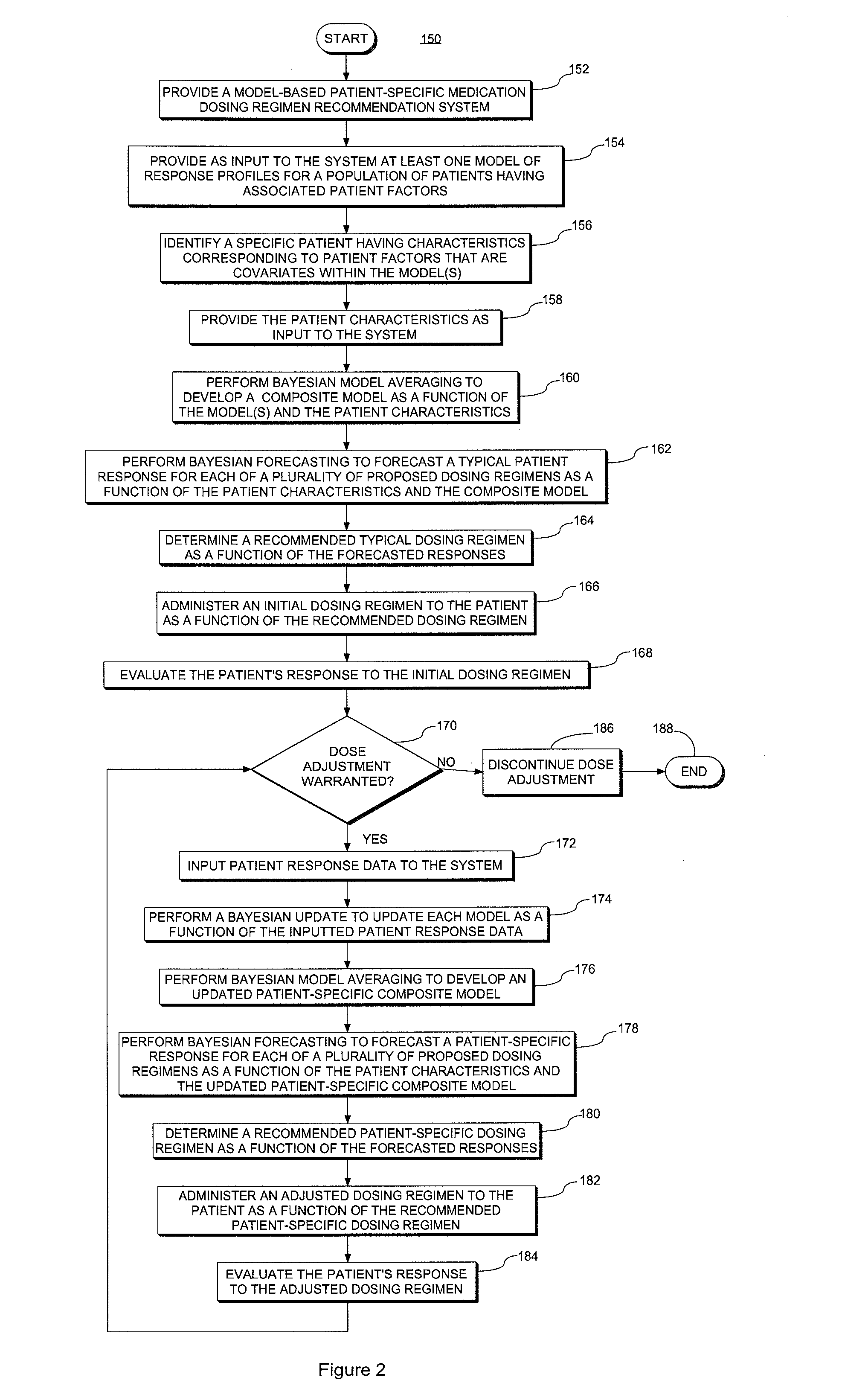System and method for providing patient-specific dosing as a function of mathematical models updated to account fro an observed patient response
a mathematical model and patient technology, applied in the field of medication-specific dosing computation, can solve the problems of ineffective or deleterious dosing regimen, increase the risk of undesirable outcomes, loss of time, money and/or other resources, etc., to achieve effective personalization of the model, and improve the effect of patient car
- Summary
- Abstract
- Description
- Claims
- Application Information
AI Technical Summary
Benefits of technology
Problems solved by technology
Method used
Image
Examples
Embodiment Construction
[0033]The present invention provides a system and method for providing patient-specific medication dosing as a function of mathematical models updated to account for an observed patient response, such as a blood concentration level, or a measurement such as blood pressure or hematocrit. More specifically, the present invention provides a system and method for predicting, proposing and / or evaluating suitable medication dosing regimens for a specific individual as a function of individual-specific characteristics and observed responses of the specific individual to the medication. Conceptually, the present invention provides the prescribing physician with access, in a direct way, to mathematical models of observed patient responses to a medication when prescribing the medication to a specific patient. In prescribing an initial dose, the present invention allows for use of published mathematical model(s) to predict a specific patient's response as a function of patient-specific charact...
PUM
 Login to View More
Login to View More Abstract
Description
Claims
Application Information
 Login to View More
Login to View More - R&D
- Intellectual Property
- Life Sciences
- Materials
- Tech Scout
- Unparalleled Data Quality
- Higher Quality Content
- 60% Fewer Hallucinations
Browse by: Latest US Patents, China's latest patents, Technical Efficacy Thesaurus, Application Domain, Technology Topic, Popular Technical Reports.
© 2025 PatSnap. All rights reserved.Legal|Privacy policy|Modern Slavery Act Transparency Statement|Sitemap|About US| Contact US: help@patsnap.com



